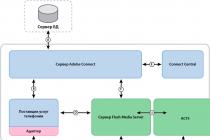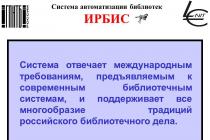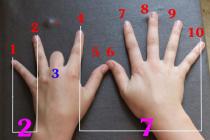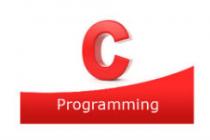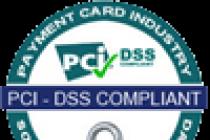Optimization - search engine promotion and optimization or, in short, SEO. This is the process by which resources are promoted in search results. Accordingly, more users see them, and the site gets more profit. What is SEO and how can an uneducated resource manager promote their website? We will consider these issues today.
SEO metrics
SEO promotion is a system of actions aimed at increasing the position of a resource in the search engine. Website promotion directly depends on the following indicators:
- ТИЦ - thematic citation index.
- PR - Google Page Rank.
- Trust, or trust, of the site.
Frankly speaking, search engines are not able to assess how useful and important an article is for the user. The robot is simply not able to read the post and understand its meaning. That is why you need to carry out special SEO optimization procedures that will help the search engine understand the importance of content and show the site in the search results list.
Why is optimization useful?
Now SEO promotion has ceased to be just a technical phenomenon. It was transformed into a kind of analytical-mathematical-psychological action, which:
- Helps to save resources from search engine filters.
- Increases target audience.
- Attracts visitors for low-frequency queries.
- Increases sales and conversions.
- It guarantees high page delivery for the most important queries for the user.
It should be noted that SEO promotion is not a one-time procedure. Search engine algorithms are constantly changing, so you cannot be sure of the stability of the positions of your resource. It often happens that in the evening a site is in the top three for the main query, and in the morning it is already 20th in the search results list. But this is not so scary, you can return the previous positions thanks to competently conducted internal and external SEO-promotion.
Internal optimization
At the heart of every SEO promotion is the internal optimization of the resource, which is considered the main one. It is due to her that the likelihood of automatically displaying a resource on the first page of search results is significantly increased.

In general, internal optimization consists of the following activities:
- SEO analysis of the resource for compliance with technical requirements. At this stage, the webmasters have to do the so-called error correction. The first thing that search robots pay attention to is the quality of the resource. Unoptimized sites with many flaws are immediately downgraded.
- Having found errors, they must be corrected immediately.
- After correcting technical errors, you need a resource, that is, pick up a list of words and phrases that most accurately characterize the topic of the site. V recent times search engines tend to be human-centered, so you need to not just automatically generate sets of phrases, but to formulate them as if a real person is requesting.
- Analyze and select keywords.
- Based on the semantics created earlier, write the Meta Tags, Keywords, Title and Description.
- Adapt menu items and create internal linking.
- Optimize content according to the requirements of search engines and the wishes of visitors.
Full list
To conduct a full-fledged internal SEO-promotion of a site, you need to work out the following positions:
- Doubles.
- Tags.
- Site map.
- Configure robots.txt file.
- Create high quality and unique SEO texts.
- Make competent linking.
- Work with microformats, microdata, usability and interface.
Each of these points should be considered in detail in order to have a complete understanding of what SEO is.
Duplicates and tags
The first thing to start with promoting is checking the resource for duplicates. The fact is that some site engines create several versions of one web page, and they can be accessed from several addresses.

For example, home page a specific site can be accessed by the following addresses:
- http://site.ru/index.php
- http://site.ru/index.html
- http://site.ru/index.htm
- http://site.ru/main
- http://site.ru/index.php
- http://site.ru/index.html
- http://site.ru/index.htm
- http://site.ru/main
You can check if the site pages have duplicates yourself by adding index.html or index.php in the address bar. If pages are opened on request, then you need to search and delete duplicates, if the resource knocks out a 404 error, then everything is in order.
It is necessary to place meta tags H1 - H6 in the text, they will also perform the function of subheadings. Don't forget about the alt tag that applies to images. This is due to the fact that search engines have not yet learned to recognize images, so they need to give a short description. This will not only raise the site in search results, but also attract new users from image searches.
Of particular importance when setting up SEO are the title and Description tags. The title tag gives the title to the document by appearing in the title bar of the browser window. In the Description tag, you need to create a short description of the page content by entering 1-2 key queries into it.
To index or not to index?
Also, every self-respecting resource must have a sitemap. It can be generated automatically, but if not, then you should make it yourself.
Sitemap.xml is a list of all resource page addresses that indicate where to index. In contrast to this map, there is such a file. like robots.txt, it contains the URLs of pages that don't need to be indexed.
This file is not a prerequisite for promotion, but if the resource contains pages that can negatively affect the promotion, then it is better to enter their addresses in robots.txt.
Content as a means of promotion
Engineering works play over the resource important role but don't discount skillful SEO copywriting. High-quality content increases the relevance of the text in the eyes of the search engine and reduces the resource's dependence on changing search engine algorithms.

Uniqueness, the presence of keywords and the absence of errors do not yet guarantee that the text will be liked by the search engine. Recently, the requirements for texts have become somewhat stricter. Based on the wishes of the average user, the text should be logical, informative and have a clear structure (subheadings, lists, etc.).
Reviews about always come to the same conclusion: they are necessary for users to find a resource for the main key queries. It is equally important to do interlinking between site pages. You can put several keywords in one text, the main thing when writing content is to adhere to the following principles:
- Long texts are liked by search engines, but not by users, so they should provide information in an interesting, concise and concise manner.
- The uniqueness and literacy of the text is above all.
- Keywords should appear no more than 1-2 times per 100 words. And the first and last paragraphs must contain exact occurrences.
Usability and microformat
An important condition for internal optimization is the presence of microformat - special tags that mark the page and help search engines understand what the page is about.
In terms of usability, the site should have a simple, intuitive interface so that the user can quickly go to the page with the necessary information. The level of sales, registrations and other behavioral characteristics depends on the ease of use of the resource.

No less important is the download speed. If the pages are "heavy", then it will be much easier for the user to close this site and go to another, where they will not have to wait long. To increase the download speed, first you need to choose a high-quality hosting, reduce the size and quality of images, and remove unnecessary requests from the resource.
External optimization
In addition to internal SEO promotion aimed at improving content and navigation, there is such a thing as external optimization. Its key point is to create a good reputation for the site among other resources. It does this by building up your link mass. Simply put, a database of sites with similar topics is created, which link to the main resource. Thus, the level of trust in the site increases and, accordingly, its position in the search results rises.
External optimization is a rather laborious process, because it consists not only of selecting good resources for creating a linkbase, but also of compiling link anchors for each keyword.
Objectives and goals
The main tasks of external optimization are considered to be the promotion of high-frequency and low-frequency queries. At the initial stage, external SEO-promotion actively cooperates with internal one. It depends on the selection of keywords and the creation of a semantic core. The task of external optimization is to help these keywords get to the first positions of search results with the help of links from other resources.
Methods, processes, analytics
Each experienced SEO specialist has his own optimization methods, but often links are simply bought on the relevant exchanges for external promotion. Each link purchased is placed on the anchor. That is, the webmaster sets the purchased link to the keyword. Thus, the user can click on the keyword and go to the page of another resource.

It is important to pay attention to the speed of link building. Of course, you can purchase the required number of links once and no longer be distracted by this. But it's better to do everything gradually, smoothly and use different ones (eternal and rented). If you quickly provide a resource with a link mass, it can fall under the penalties of the search engine, such actions will be regarded as black optimization.
Promotion of low-frequency queries
As practice shows, without large investments, it is almost impossible to break into the top of search results for high-frequency queries, but if you mess with low-frequency queries, you can get your place in the sun. Correct setting SEO in compatibility with low-frequency promotion will allow:
- Get a high percentage target audience.
- Save your promotion budget.
- Provide high positions in search engine results.
With such prospects, it is worth understanding that resource optimization for low-frequency requests is a laborious process, and if you make mistakes due to inexperience, you can lose some of your visitors. This type of SEO promotion consists of several stages:
- First, you need to find relevant pages with suitable low-frequency queries.
- Carry out their technical optimization for further promotion.
- Perform internal linking.
- Select sites for buying links.
In general, this procedure is also relevant for high-frequency queries, but there are only two buts. Firstly, in the second case, the competition is higher and it is very difficult to get to the top. Secondly, you will have to spend a lot of resources to buy external links, but at the same time no one gives a guarantee that the resource will hold out in the first positions of the issue for a long time. This is what SEO is - a real webmaster war for best positions.
Friend's help
Now it becomes clear what SEO is. There remains only one question to be solved: to deal with this complex process on your own or to entrust the matter to professionals?

To promote sites, they often use the services of various resources. For example, Seo-Mix. According to managers, this is a unique project that not only helps in promotion, but also provides an opportunity to earn money. Its essence is simple: the owner of the site orders advertising, and the resource promotes it. Thanks to low prices this project is very popular with advertisers. As for earnings, for each visit to the resource once every 20 minutes, a registered user can receive up to 5 rubles, which can be withdrawn to an Internet wallet.
The Seo-Sprint project promotes sites by similar methods. Customers want to improve the behavioral characteristics of resources, pay the leaders of this project. Those, in turn, attract performers who, for a modest fee, watch ads, visit pages, write comments, etc.
That's all the secrets of website promotion. You can independently study the basics of SEO-promotion, you can order promotion from professionals, or you can combine these two processes by yourself creating good content by building up your link mass and buying a few weeks of favorable behavioral characteristics. In any case, the choice always remains with the webmaster.
Good afternoon, readers of my blog. Many of you have already understood that I am basing my blog on five pillars, one of which is SEO optimization and website promotion. But if you are a beginner and have never met this concept before, it will be difficult to immediately grasp what I have written. Therefore, I decided to start this section from the very basics. In this article, we will define what a SEO is, what a SEO is for a young blogger, and how to improve a site's position in search engines with the help of SEO optimization.
| We recommend reading: |
So let's start with the definition. SEO is an acronym for Search Engine Optimization. Those who speak English have already been able to understand the meaning of the phrase, and for everyone else I will say that in translation it means optimization for search engines, or search engine optimization.
There are many definitions of SEO. I am sure that every web master and optimizer will somehow be able to interpret this concept in his own way, make his own contribution and his understanding.
And what does Wikipedia tell us about this? There you can find a definition like this:
Search engine optimization (SEO) is a set of measures to improve the site's position in the search engine results for certain user queries in order to promote the site.
| We recommend reading: |

The definition of SEO can be found in articles by popular bloggers, on SEO forums, in various encyclopedias. They will all be different, but at the same time the same. To summarize, we can say that SEO is a certain process that includes a number of measures to work with the site, its internal optimization, content improvement, code optimization, work with external factors that affect ranking and position in search engines.
What is an SEO for?
After reading the definitions of search engine optimization, you might already have guessed that it is very important to your site. If your plans include not just creating a website, but developing it, filling it with interesting and useful content that will attract visitors, then you need a SEO for maximum effect. Interesting articles, beautiful design, convenient site navigation are good, but not enough. If the site is not optimized, the articles are not correctly formatted, then it will be almost impossible to get into the TOP of the search results. Some will ask - "Why do I need this TOP?" When you search for information in a search engine, do you often look at 2, 3 or 4 pages? I'm sure everything ends with the first 10 links, or even less. So, according to statistics, only 15% of users look at sites that are on the 2nd page, and only 5% on the 3rd. From this it can be understood that 85% of people view only TOP10 sites.
| We recommend reading: |

If you want a lot of users on your site, then you need to climb into this TOP, and the higher the better.
But what if you don't understand anything about SEO, and the site needs to be developed? There are two options:
1. Contact the optimizers, who, for a certain amount, will put your site in order and give recommendations for the further development of the resource
 Outbound Links - Good or Bad?
Outbound Links - Good or Bad?
Today will be very interesting post for beginners, from it you will learn what seo is. Many are horrified when they hear this scary word "seo", perhaps you are one of these people. But I will hasten to console you, because in this article I will talk about the CEO in simple words... And I hope that after reading this you will no longer be disturbed by this question.
What is SEO? SEO is search engine optimization, the English version sounds like this (Search Engine Optimization), and in simple words, this is a method to promote your page for any query. In other words, make some page relevant to the query.
But rightly so - an optimized page does not yet guarantee reaching the TOP of search engines. TOP is the top ten in the search results. When you type a request into the search line of the browser, Google or Yandex gives you 10 responses, plus millions of other pages, these first 10 responses are the TOP - the top of the search results.
People who are engaged in SEO promotion are divided into 2 types.
1) Optimizers who promote their pages by any means, regardless of the quality and needs of users. Scientifically - black seo.
2) These are ordinary webmasters and SEOs who naturally develop their resources and try to make them more accessible to search engines in order to ultimately benefit people. Scientifically - white seo.
It is the second option that you need to focus on if you run a website for people and want to keep it for a long time.
Below, I will give examples that will facilitate promotion, gain a foothold in search results, and get good targeted traffic. We, of course, will not analyze algorithms and formulas, firstly, I myself do not know them, and secondly, they change several times a day. We will be guided, so to speak, by the logic and perception of people.
What is SEO, simple SEO?
So let's get started. You always need to put yourself in your place regular user and think over how he would act in a given situation by going to your resource.
Consider what people might be looking for by typing a particular request in order to save them on their site.
The simplest example. Often people ask the search engine questions of interest, enter phrases, phrases, and not just open the search engine in order to have fun and enter there it is not clear what. Although, this happens: b
If a site has an answer to their request, then most likely they will like the site and want to bookmark it.
This is the first step of a simple SEO, try to make quality material that will help people, answer their questions and solve their problems.
After getting to your page, the visitor should understand from the first seconds that this page is about the "word" he is thinking about.
An easy example. Let's say you. When you surf the Internet and look for the information you need, you don't reread everything from cover to cover, right? You filter information for the necessary and unnecessary.
Ordinary visitors do the same. They come to the site, quickly scroll through the article, pay attention to the key points, headings, highlighted words, and if it does not suit him, then he closes the page and goes to hell, or goes to another page or closes the browser altogether.
For this, search engines have developed such an algorithm that if in the article the keywords are highlighted in bold, italic, underlining, H1-H6 tags, then this page is most relevant to this query.
The keyword should be: in the title of the page, that is, in (Title), in the title, just in the text.
Title is written in the all in one seo pack plugin for each article, and the title must contain the keyword in the exact word form, for example, I promote this page by request “ ", And this is what I have written in the settings.
Any of the headings from H1 to H6 must also contain KS. Search robots give more preference to tags H1-H3, then H4-H6, they are of lesser importance with the previous options.
Just in the text, you do not need to highlight each keyword in bold, italics, underlining, etc., it will be enough to highlight these keywords once and it is imperative that this word be like a regular text - “what is seo”, without any highlighting.
And here attention, using these three rules, we can say that you know SEO. With this knowledge, you can already optimize your pages. Let's take a closer look at the headings.
Use the "H1" tag for headings, "H2" for subheadings, and "H3" for sub-subheadings, and so on.
A lot of newbies make such a mistake, they use the H1 tag several times on the page, this cannot be done. Remember once and for all, the heading of the first level should appear only once on the page.
To make a word stand out on the page, start one of the first paragraphs with it.
This is such a little secret, very many do not use it, and I myself sometimes forget about it. You need to start a paragraph with a keyword in the exact word form, and the higher the paragraph, the better. But keep in mind that it does not need to be bold, italicized, etc., just plain text.

Remember I mentioned above about visual and mental perception?
Again, I want to touch on the TOP of the search results and talk about Title tags, because it is the most important element in promotion, so you need to pay enough attention to it.
And again you need to pretend to be an ordinary user to make it clearer. Suppose I am an ordinary Internet user, I am interested in the question "?". I open any search engine and type in this query, in response they give me 10 options.
How to create a blog
How to create a blog
And in the third version it will be like this: How to create a blog | Promote it | And make money on it
The third option has a much higher chance of getting a potential user, or even a client.
And all at the expense of what? Due to the correct composition of the Title. Visually, it stands out from others and catches the user.
This is what I'm getting at, your titles should be catchy and visually stand out from others, then even if you are not in the first positions, but for example by 7-10, then the probability that the user will come to you increases several times!
Below, I will give you some examples that will make you stand out from the others.
1. Use the vertical bar | to separate words, this will grab the visitor's attention and make you stand out from others. Here, too, you need to be careful not to overdo it.
2. Use quotation marks. Our subconscious mind perceives quotes as something important, so show the user clearly that your title is important and worth attention.
3. Use word highlighting where appropriate.
How to promote a website? - Fast, FREE, from scratch
On this, perhaps, I will end, my advice to you:
Pour into the atmosphere of an ordinary user, think over what and how it should be, it is better you write 1 high-quality article that will work for you for years than 10 teap-bloopers ...
And finally, a few tips:
- do not make grammatical mistakes in the headings;
- don't just list keywords in headlines;
- do not make headlines too long, try to fit in 65 characters;
- make the headline credible;
- make the visitor want to click.
Did you understand what seo is from this article? I look forward to your comments and questions.
When you learn how to write optimized articles, perhaps they will need to be promoted in search engines with links, about how to do it correctly so as not to harm the site, I will still write, subscribe to blog updates so as not to miss.
Best regards, Mikhed Alexander.
SEO (Search Engine Optimization, Search Engine Optimization) is a comprehensive development and promotion of a website to reach the first positions in search engine results (SERPs) for selected queries in order to increase traffic and further generate income.
The higher the position of the site in the search results, the more users go to it. Therefore, works on:
- increasing the compliance of pages with search queries (relevance),
- optimization of structure and content,
- improving commercial factors,
- optimization of the page code,
- build-up of external factors of the resource's significance.
Optimization rules are set by search engines. Each of them uses and regularly updates its own ranking algorithms, which are made up of many factors. And although the formulas are kept secret, experts know which factors have the most weight. By influencing them, you can improve the position for key queries in the search results.
User behavior, user-friendliness, and site loading speed are critical to promotion results. With the development and complication of algorithms, the importance of the above factors is steadily increasing, which ultimately makes search results of higher quality. Search engines strive to deliver the most useful material to a user's request. Consequently, resource owners need to publish content that is most interesting to its audience.
And if it works today, it is not a fact that it will work tomorrow. Services are constantly changing, rebuilding. Approaches are changing along with them.
How is SEO evolving?
SEO began with the emergence and development of search engines in the mid-1990s. At this time, search engines selected resources for a very simple principle: they took into account the words that were in the text of the pages. SEO before 1998 was key spam. The first search results included Internet resources with approximately the following texts: "Sneakers for sale Moscow". The search results were terrible. The tops were mostly spam.

In 1998, Google made the first SEO revolution by launching the link period. Search service implemented the PageRank link ranking algorithm, which calculates the weight of a page by counting the importance of links to it. The more links a page has, the more important it is. And in 1999 Yandex announced the use of its own citation index to organize Yandex.Catalog. TIC determines the authority of Internet resources, taking into account the qualitative characteristics of links from other Internet resources.
In these conditions, SEO starts to develop quite quickly. The first agencies that provide website optimization services appear, a link business is emerging: link sellers, automatic promotion services, and scripts for link exchange appear.
The dawn of link SEO was 2005-2009. It was a time of big link budgets, 100% guarantees. SEO is becoming a highly profitable business.

In 2009, the second revolution took place - the introduction of algorithms machine learning to search engines. One of the best machine learning algorithms invented at Yandex - Matrixnet. It is used to build a ranking formula for the search engine of the same name. In fact, the machine writes the formula. Therefore, since 2009, SEO requires knowledge and hard work.

2012 is the beginning of a non-referencing period. Search engines fight links. In April 2012 Google launches the Penguin algorithm. It blocks Internet resources for low-quality links created by webmasters in order to influence rankings. Following him, in March 2014, Yandex ceases to take into account the link factor in ranking for commercial queries. And in May 2015 Yandex introduces the Minusinsk algorithm, which periodically identifies the leaders in the purchase of links and limits them in ranking. Promotion only by buying links has become useless.
At this time, companies begin trying to study ranking algorithms to understand which factors to focus on. Various promotion models are being developed, new strategies and methods are being tested.

What is it like
search results today?
Website optimization
or how does SEO work?

Search engines are constantly striving to improve the quality of the search results, so it is necessary to promote the Internet resource in a comprehensive manner. This is working with the technical side, content as a decisive factor, convenience, usability, correct display on different devices and attracting natural links.
The work is divided into two subtypes: internal and external optimization.
“Hello, Oksana! Despite the difficult situation with the ranking algorithms (many sites that were incorrectly promoted were banned), it is possible to maintain positions in Yandex Top10 for 75% of requests and in Google for 77% ”.
This is a quote from an email that an SEO professional sent to one of my clients.
In my opinion, this quote and this particular example very well demonstrate the situation as a whole, which is now prevailing in Russia:
- this situation is unstable, the market is in a fever
- SEO specialist cannot control the situation
- the user who pays for it does not understand anything about SEO
Why did this situation arise? Recently, a lot has changed in terms of promotion on the Internet and in the work of search engines. Many SEO users find that the previous promotion methods are no longer as effective. Search Engine Optimization Guide for Beginners
Indeed, if before there were SEO specialists who could be contacted and most likely to get a result (even without engaging in content, but resorting to “black” promotion methods - a whole market has built up around this), now many of these methods are simply does not work.
And as a business consultant, I am often asked what to do now in order to bring my sites (or other resources) to the top positions of search engines.
How do I see the solution to this problem? First of all, everyone who uses SEO promotion for their Internet resources should independently figure out what SEO is and what are the mechanisms of its work and use the information provided in this article.
I myself, when I started to understand the issues of SEO-promotion, faced with a lack of information, and it was mainly of an advertising nature.
Therefore, in this article I want to structure the collected material and clarify the understanding of the issues of what SEO is, what are the historical prerequisites of the current situation, what is the current state of affairs and, of course, what effective methods of promotion exist.
This article will be interesting, I hope, both for Habrahabr users and for other users interested in promoting a website on the network.
In this article, by search engines, I will mean the main systems in which the majority of users work - Yandex and Google.
So, let's begin.
A lot of information (mostly of an advertising nature) will come out in search engines for the query “what is SEO”. Some resources, answering this question, quote each other, some give their own definitions of SEO, but this does not add clarity to the question.
What is especially interesting: some resources do not even write “SEO” in English, but “SEO” in Russian, introducing some confusion in the understanding of the issue. This abbreviation is not deciphered in any way, since it is written in Russian letters of the English letter combination, accordingly it does not carry any meaning.
Wikipedia defines SEO as follows:
Search engine optimization (SEO) is a set of measures for internal and external optimization, to raise the site's position in the search engine results for certain user queries, in order to increase traffic (for information resources) and potential customers (for commercial resources) and the subsequent monetization of this traffic.
I agree with this definition. But for an unprepared user, information from Wikipedia can seem a little complicated and confusing. Here is the definition that I give when I explain this question to my clients:
SEO is any action aimed at bringing your site or any of your other resources to the top positions of search engines to attract visitors.
Here I am expanding the concept of SEO. This is not only direct promotion of your site, but also indirectly attracting visitors to your site by posting your materials on other Internet resources.
So, I distinguish two types of SEO:
- Direct SEO is directly promoting your own website, when a search engine gives out a link to this site in the results at the request of a visitor.
- Indirect SEO is the promotion of your company by posting your materials on other Internet resources in order to subsequently attract visitors to your site. In this case, the result of search results does not lead to your own site, but to someone else's, from where visitors, if they are interested in the information, can go to you.
How indirect SEO works:
- You post an informational article (specifically informational, not advertising) related to the product of your activity on any relevant Internet resource (forum, community, Internet edition).
- Your article can reach the top positions of the search results for certain queries.
- The user comes to this resource, reads your article.
- If a visitor is interested in your information and you, he can become a visitor to your site (follow the link from the article to your site, if the Internet resource allows you to place links, either by the name of the company or by the name and surname).
There's nowhere without history
In order to better understand what SEO is and how the current situation has developed, we need to dive into the history of the issue. When search engines first appeared (from the Russian ones, they were Rambler, Mail, Yandex), the influence of sites on the search results was great, since there were not so many sites themselves as now, and the search engines themselves were not yet so developed.What time was it? It was a time of experimentation. The Internet (in its modern sense) was only in its infancy at that time. Accordingly, many practices have not yet been developed. Search engines were then one of the sources of information. They were not so strongly developed and did not dictate their terms to the market yet.
I still found such a time when sites were called by ear, or transmitted direct links, and their names were entered directly into the address bar. Today, even if the name of the site is known, as a rule, it is still entered into a search engine. Some today do not even know what an address bar is, and in almost all browsers it is no longer just an address bar, but a search bar.
How was SERP ranking before? The search engines took into account the following data:
The more links led to the site and the more correct the page was from a technical point of view, the more likely the site was to be in the top positions of the search results.
Why was it so crucial in the past? Because search engines didn’t have the same power as they do now, and such sophisticated ranking algorithms haven’t been invented. For example, Yandex search as of 98th year worked on only three computers.
Search engines have to some extent been forced to “trust” the creators of the sites.
And it was then that speculation and manipulation of search results began. Various “gray” and “black” promotion methods appeared (link exchanges and various tools for meta tags, etc.) You could buy thousands of links on thousands of sites and be in the top of the search results.
Then search engines began to actively develop. And now the algorithms for ranking these search engines have improved so much that we can say that the number of links and page structures are not as important to them as they used to be.
Google and Yandex in their recommendations say that you do not need to be puzzled by the internal structure of the site and how the page looks for search engines, you must first of all think about how visitors will read it. Search engines began to look at sites from the point of view of the visitor and increasingly come closer to the human understanding of content.
I want to clarify a few points. The fact that the structure of the page is not so important for search engines right now does not mean that you do not need to fill in titles, descriptions, etc. This must be done, but not from the point of view of the search engine, but from the point of view of the visitor. Search engines display exactly the site names and meta descriptions as search results, so they must be present on every page.
I would also like to draw your attention to one nuance. Yes, meta tags are not that important for search engines right now, but you shouldn't confuse meta tags with descriptions of other information. In addition to text, there are various elements on the page: photos, videos, etc. These are more complex formats for indexing. Search engines cannot figure out yet what is contained in a video or photo. They can only figure this out if we create a textual description for this kind of content. Therefore, such descriptions must be added to the site (using alt-text). This helps search engines better understand what images and videos are on your site, which in turn makes them more likely to appear in image and video search results.
Just like the structure of the page and the number of links, it doesn't matter for search engines which engine the site is built on. Some sources claim that the platform on which the site is built (be it a CMS platform or a builder) is “SEO friendly”. Of course it is marketing moves the CMS themselves and the designers who say that the site created on their basis will be better ranked by search engines than sites written on other systems. This is not true. The site engine has practically no effect on site promotion. Why? Because the search engine is not interested in what the site is written on, it may not even know it.
What's really most important about a site's platform from a search engine perspective:
- The speed of the site and page opening. The platform should provide high speed work. The faster the site opens, the better for the user in the first place. And if you have achieved speed from some bulky CMS faster than from some publicized framework, then the platform does not matter.
- Mobile version of the site. We must not forget that mobile versions are gaining momentum now. Your site engine must either support mobile version, or use responsive design.
Returning to the history of the issue, I will summarize: the principles of ranking that were in effect before are no longer so effective. SEO now has to be seen as part of a marketing strategy. Now, paradoxically, digital life is getting closer to reality. If earlier sites had to communicate their content (using meta tags, etc.), now search engines have learned how to do it themselves. They took on a lot of work. This is why meta tags are no longer so important to search engines. And if earlier information about oneself was placed in a magazine, book, catalog - now the same is happening in relation to Internet resources - it is necessary that the content of the site is visually pleasing and informative, like in a real magazine. This is part of the marketing strategy.
SEO = search engines
You need to understand that SEO and search engines are inextricably linked. SEO simply doesn't exist without search engines. You do everything only so that search engines notice your material, understand it, rank it and give it out in the first places of your search results at the request of visitors.How does search work?
Let's take a look at how the search process is now organized.Search engines have so-called spiders that follow the links on the site deep into each page.
These spiders index the site, that is, they save everything they "read" into an index to their database. And when a visitor enters a query in the search box, the search engine looks for information in its database, and not on sites.
You need to know this: the search engine searches for information in its database.
Several conclusions follow from this:
- If the search spider has not yet gone through your site, it means that it has not saved information about your site in its database - accordingly, it will not give such a site as a result of a visitor's request.
- Conversely, if a search engine has indexed your site, then it will display it in the search results. In what place is another question.
- If, for example, your article you just posted has not yet been indexed search spider, and someone copied it, and his site is indexed faster than yours, then this article for search engines will belong to the site that copied the content, and not to you. As a result, the competitor will be higher in the search results, and the original may not get into it at all, since duplicates are simply ignored by the search engine. What needs to be done to protect yourself from this is a separate issue, and we will not consider it within the framework of this article.
How does a search engine decide what to show to a visitor?
There is a lot of information about what the ranking algorithm is, there are many specialists who write books about how a search engine gives information on demand - but ... these are just guesses. Why?The way a search engine gives information to a visitor upon his request is a trade secret of each search engine. No one knows for sure on what basis the results are issued.
Google once joked that it hires pigeons to rank pages that randomly select pages.
Of course, the question arises why search engines do not tell how to create such a page so that the search engine understands it very well. This is done so that there is no way to manipulate the issue. If users, specialists, web developers know how the site is ranked, how the search engine works, then they will be able to adjust and manipulate the search results, which is not in the interests of the search engine.
What can be done?
- First, you need to follow the recommendations for promoting the search engine in which you are promoting. Recommendations in different search engines are different, but in general they are similar.
- Secondly, you just need to create interesting content and create a lot of it. As I wrote above, you can create articles that must meet certain principles (which we will talk about below in the section "Legal SEO")
What can't be done?
It is impossible to buy space from a search engine.I have heard more than once about the presence of mythical acquaintances in the administration of any search engine, or that the company is so cool and big that it can buy a place in the search results - no, this is simply impossible.
Website promotion methods
Traditionally, white, gray and black optimization are distinguished, but I would still highlight the following promotion methods from the point of view of the search engine rules:- legal SEO - promotion methods aimed at the compliance of the resource with the requirements of the search engine and to ensure that the visitor receives relevant information
- illegal SEO - methods that do not meet the requirements of the search engine and are aimed at manipulating search results.
Illegal SEO
Illegal SEO from a search engine's point of view includes, for example, the use of doorways and cloaking. Doorways are web pages that are optimized for specific search queries and redirect users to other sites. This is inconvenient, since the first few search results can lead to identical pages or resources that are not of interest. Cloaking - the user is given one page, easy to read, and search robot- another, optimized for any queries.In fact, illegal SEO is now fading away because anyone who tries to trick a search engine is easy to spot. In addition, competitors are not asleep, who are also promoting SEO. If your competitors find out that you are "behind the scenes", they can write a complaint to the support service, and the search engine will simply downgrade you in the search results or be banned altogether.
Illegal methods of promotion, which search engines are now actively fighting against, include SEO exchanges and links of irrelevant pages. There are practically no such exchanges abroad, in Russia there are only a few. They sell links on their sites to attract what is called link mass. But what an advertiser needs is not always necessary for a site visitor. In other words, if I type in the search query “SEO”, I want to see information about SEO, not the services of various companies and specialists.
Search engines are now quite successfully fighting this, because the level of trust in the search engine from the side of visitors is dropping due to irrelevant results.
Why is it not yet recommended to use illegal promotion methods? In case of exposure of the use of "black" methods and legal methods of promotion may go to waste, the site will be downgraded in the search results, or it will be banned altogether.
Legal SEO
What legal promotion methods are there? I will give you effective methods from the practice of my and my clients that meet the recommendations of Yandex and Google.- Create unique content. It is necessary to create content that will be useful and interesting to visitors. Articles should have informational value for the visitor and have a certain volume. These should not be small, but detailed detailed articles of at least 7-8 thousand characters, which reveal as deeply as possible the essence of the issue.
- Try to continually add new content. This does not mean that you need to post blog entries every day, no, let it be once a week (or at a different frequency), but let it be good, high-quality materials.
- Post on relevant sites with moderation. Articles should be located on relevant resources that inspire trust among search engines. If I post a technical article on a cosmetics forum, however good it is, it will never get indexed as well as it would if I posted it on Habrahabr. This must be understood.
What promotion methods are questionable
In my experience and that of my clients, some promotion methods that are touted as a panacea have questionable benefits.Often, businessmen use the services of posting information about the company with a link to the site in hundreds of Internet catalogs. This does not work, because search engines have very low confidence in these sites, this is irrelevant information, and for a search engine, simply placing a link in hundreds of directories does not mean anything.
But there is one exception - this is when you post on your site information about the client company you worked with. This is very important point... People who are looking for your client will go to your site. For example, if I work with the company "Vector" and wrote a small review in the description of the client on the site, my site will appear in the search results when the query is "Vector". This contributes to an increase in traffic, albeit indirect. Such a link will be quite competitive.
Advertising versus SEO
Many people are interested in the question: advertising versus SEO (Yandex Direct, Google adwords against SEO). What to choose: contextual advertising or SEO promotion. I will not recommend any of these types, as both are effective when done correctly. I will just give you what are the advantages and disadvantages of both methods of promotion.Advertising. Advantages and disadvantages
Advantages:
- Speed of placement - you place your ad, it is moderated, and if approved and paid, it immediately goes to the top of search engines.
- Manageability - you can control the price and decide when and where to place your ad.
- Targeting - search engines make it possible to use settings such as negative words, region, etc.
- Predictability - You can tell for sure that your ad will appear if the search engine has approved your ad. You can be sure that the search engine will show a specific number of ads. And if you spend more money, then you get more applications.
- Free content - your ad will appear regardless of the content on your site, so you don't have to change the site to promote it through contextual advertising.
Disadvantages:
- PPC advertising leaves no trace - after you stop paying, there is no trace of your site in the search results. Some people think that paid advertising will help promote the site for subsequent SEO promotion, but this is a misconception.
- It is relatively expensive. Some will argue that there are low-frequency queries. Whole courses and webinars are dedicated to this. But now there are fewer and fewer opportunities to advance through low frequency, because if you work in a competitive market, then your competitors have the same thoughts as you.
- Such advertising is well “cut” by various advertising cutters, banner cutters, etc. For example, I hardly see ads, because my AdBlock simply hides them.
SEO. Advantages and disadvantages
Advantages:
- AdBlock is not “cut”. No counter-ad units cut the search results of SEO-promoted sites. Search engines will always give out such materials, and there is no way to hide them.
- High conversion due to trust. If you posted an article, and it came out in the top of the search engine, then the visitor clicking on it, reading it and going to your site will be more predisposed than if he clicks on the advertisement. In this case, the visitor will have more high level trust in you. It's one thing when I click on an advertisement and understand that they can write anything there, and another thing is when I read the article, I received valuable information, and the level of trust in such a site and such information is correspondingly higher.
- Long-term positions. No one can, of course, guarantee how long your material will stay in the top, but it will not disappear without a trace from the search results, even if its position drops.
Disadvantages:
- Poor predictability. No one can guarantee you that the article will reach the top of the search results. Of course, you can definitely achieve this if you follow some rules, but there are so many of them that it is very easy to lose something. In addition, the material must be very carefully prepared and posted on quality resources.
- High price. SEO has a very high cost compared to direct advertising, for example. Good SEO is worth big money... To prepare a good article, good content, it takes much more time than just placing a link in the same Direct.
- Usually a website rework is required. Your site must meet certain requirements. If the site is inconvenient, then search engines will not rank it high either.
- And of course, such materials do not immediately appear in the search results. For this, time must pass, patience is needed here.
Conclusion
What conclusions can be drawn from all of the above? The time when it was possible to manipulate the results of search engines is gone. Now search engines have begun to change their algorithms, they are becoming more and more intelligent. Accordingly, it is more and more difficult to deceive them, and it is also more and more difficult to adapt to them. Therefore, it is better to take the path of least resistance, legally promote your resources and follow the recommendations of search engines.If earlier sites had to be technically correct to be displayed in search results and it was possible to ignore the consumer and his interests, now search engines urge the creators and owners of sites to think like a site visitor. It may sound trite, but this is where you should start. It is necessary to create content specifically for users, not for search engines.
UPD After the article was published, I was asked several times why I did not write about the technical side of SEO. You can read about the semantic core, internal page optimization, snippets and much more by following the links




